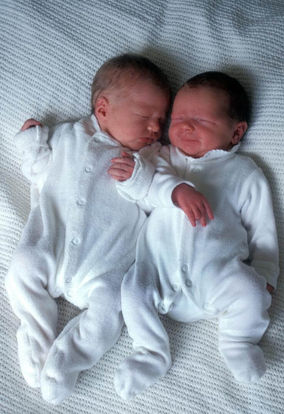25 weeks and 2 days pregnant

This image shows the baby in profile, this time in 3D. The coils of the umbilical cord are just seen in the background passing behind the baby’s head. The eyelids can be seen, still firmly closed. Fat stores are now giving the face a much more rounded contour.
Two tiny glands control your baby’s growth and development now, and give her the ability to face up to life’s stresses later.
Relative to body size, your baby’s adrenal glands are 20 times larger than your own. The adrenal glands are roughly triangular in shape, with their base wrapped over the top of each kidney. They have an outer layer, or cortex, which releases steroid hormones such as cortisol, and an inner layer, or medulla. Adrenaline and the related hormone noradrenaline are secreted from the medulla in response to stress.
Adrenaline prepares the body for a “fight or flight” response, increasing the availability of glucose, speeding up the heart rate, and maintaining or raising blood pressure. These are vital adaptive responses for your baby that will help to maintain a stable environment within the uterus and prepare her for the stresses of life later on in the outside world.
It is the outer cortex, however, that needs to work hard, producing many hormones that help to co-ordinate your baby’s growth and development. The cortex produces three types of hormones: mineralocorticoids that regulate salt balance; glucocorticoids that help to control the availability of sugars, fat, and amino acids in the bloodstream; and androgens, male-type sex hormones, such as testosterone. It is the cortex that accounts for the large size of your baby’s adrenal glands. After birth, in the first couple of weeks, the adrenal glands rapidly reduce in size.
I’ve noticed lumps in both my breasts. Should I be worried?
Breast lumps can be normal in pregnancy, especially in the third trimester as the breasts get ready for breastfeeding. These lumps are generally soft and may move around; they may also be tender. However, breast lumps should never be ignored, so always see your doctor who will be able to confirm that they are pregnancy related.
Twins from the same egg have the same DNA. In a way, they’re natural clones, so you might expect them to be identical in every way. They will certainly look very alike, and have the same hair colour, eye colour, and skin colour. They will also have the same blood group and tissue type.
However, the environment isn’t the same for each baby, even pre-birth. Small differences in blood flow, and in location in the uterus, can have far-reaching effects.
There may be recognizable differences in the weight, height, and head shape of identical twins.
Each twin has unique fingerprints and iris patterns.
Identical twins can have different personalities too, partly because of subtle dissimilarities in their very early environment.

Be the first to support
Be the first to share
Comment (0)
Related Blogs & Vlogs
No related events found.
Loading more...